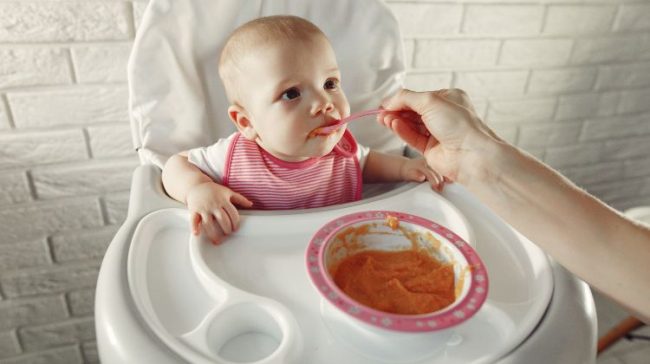Potty training is a significant milestone in both a child’s development and a parent’s journey. It marks the transition from diapers to using the toilet, a step towards independence that can save parents time and money. While the process can be challenging, with the right approach and understanding, potty training can be smooth and even enjoyable. This article offers a detailed guide on how to potty train your baby, covering when to start, how to prepare, methods to use, and tips for dealing with setbacks.
The Right Time to Start
The first step in successful potty training is knowing when your child is ready. Most children show readiness between 18 and 30 months, but this varies. Key signs of readiness include:
- Physical signs: Your child can walk, sit, and rise from a potty chair independently. They also have regular, predictable bowel movements.
- Cognitive signs: Your child can understand and follow basic instructions.
- Behavioral signs: Your child can express in words or through behavior that they are going to the bathroom. They also show interest in others’ bathroom habits, and can express discomfort with dirty diapers.
- Emotional signs: Your child demonstrates a desire for independence and shows pride in accomplishments.
Delay potty training during stressful times, such as moving, changing daycares, or the arrival of a new sibling. These changes can make training more difficult.
Also Read: Parents Guide to Toddler Bedwetting
Preparing for Potty Training
Equip Yourself with the Right Tools
- A potty chair or a seat reducer that fits on a regular toilet: This depends on whether your child feels more secure sitting low to the ground or is comfortable on a full-sized toilet with a smaller seat inset.
- Easy-to-remove clothing: Choose pants with elastic waistbands or dresses and skirts if your child is a girl. These make it easier for your child to act quickly when they need to go.
- Training pants: These are helpful for the transition period. They pull up like underwear but offer the absorbency of diapers.
- A step stool: If using a toilet seat reducer, a step stool helps your child get on and off the toilet more easily and reach the sink to wash hands.
The Potty Training Journey
Here’s a breakdown of the potty training process:
Potty Familiarization
- Let your child sit on the potty fully clothed at first. This helps them get comfortable with the sensation.
- Read them a book or sing songs while they’re on the potty. Keep it positive and relaxed.
- Allow them to explore the bathroom and get used to the environment.
Establishing a Routine
- Schedule regular potty breaks, like after waking up, before bed, and after meals and drinks. This helps your child recognize bodily cues and anticipate using the potty.
- Let your child go “naked bottom” for short periods during the day, especially after waking up from a nap. This increases their awareness of wetness and the need to use the potty.
Show and Tell
Children learn by imitation. Use dolls or teddy bears to demonstrate the process, or allow an older sibling to lead by example. Explain the process in simple terms that your child can understand.
Accidents Happen
- Accidents are inevitable. Don’t get frustrated or punish your child.
- Calmly clean them up, remind them about using the potty next time, and offer positive reinforcement for trying.
- Avoid using pull-up diapers as regular underwear. They feel too similar to diapers and can slow down progress.
Positive Reinforcement
- Celebrate successes with enthusiastic praise, stickers, or a small reward chart.
- Focus on the effort, not just the outcome.
- Avoid comparisons with other children; every child learns at their own pace.
Regression and Nighttime Potty Training
- Regressions are normal. Don’t be discouraged. It may be due to a stressful event or developmental leap.
- Be patient, go back to previous steps if needed, and offer extra reassurance.
- Nighttime potty training can take longer. Pull-up diapers are okay for nighttime until your child consistently stays dry throughout the night.
Additional Tips
- Let your child take the lead: Don’t force them to sit on the potty for long periods. It can create resistance.
- Lead by example: Let your child see you using the toilet. It can help them understand the process.
- Make it a team effort: If you have a partner or caregiver, get on the same page about potty training strategies.
- Be patient and consistent: Potty training can take weeks or even months. Celebrate the small victories and stay positive.
Alternative Potty Training Methods
- Three-Day Potty Training: This method involves setting aside three days to focus intensely on potty training. The child is allowed to go bare-bottomed and is encouraged to use the potty regularly throughout the day.
- Scheduled Potty Breaks: This involves setting a timer and taking your child to the potty every 20 to 30 minutes, gradually extending the time as they get used to holding their bladder.
Troubleshooting Common Problems
- Resistance: Some children initially resist potty training. If your child resists consistently, it may be best to take a break and try again in a few weeks.
- Fear of the Toilet: Some children are scared of falling into the toilet or are frightened by the flush. To overcome this, make sure the environment is child-friendly and that the child feels secure using the potty or toilet.
Final Thoughts
Potty training is a journey that involves much patience and encouragement. Every child is unique, and what works for one may not work for another. By waiting until your child is ready, preparing adequately, choosing an appropriate method, and handling the training and inevitable setbacks with calmness and consistency, you set the stage for a positive potty training experience.



